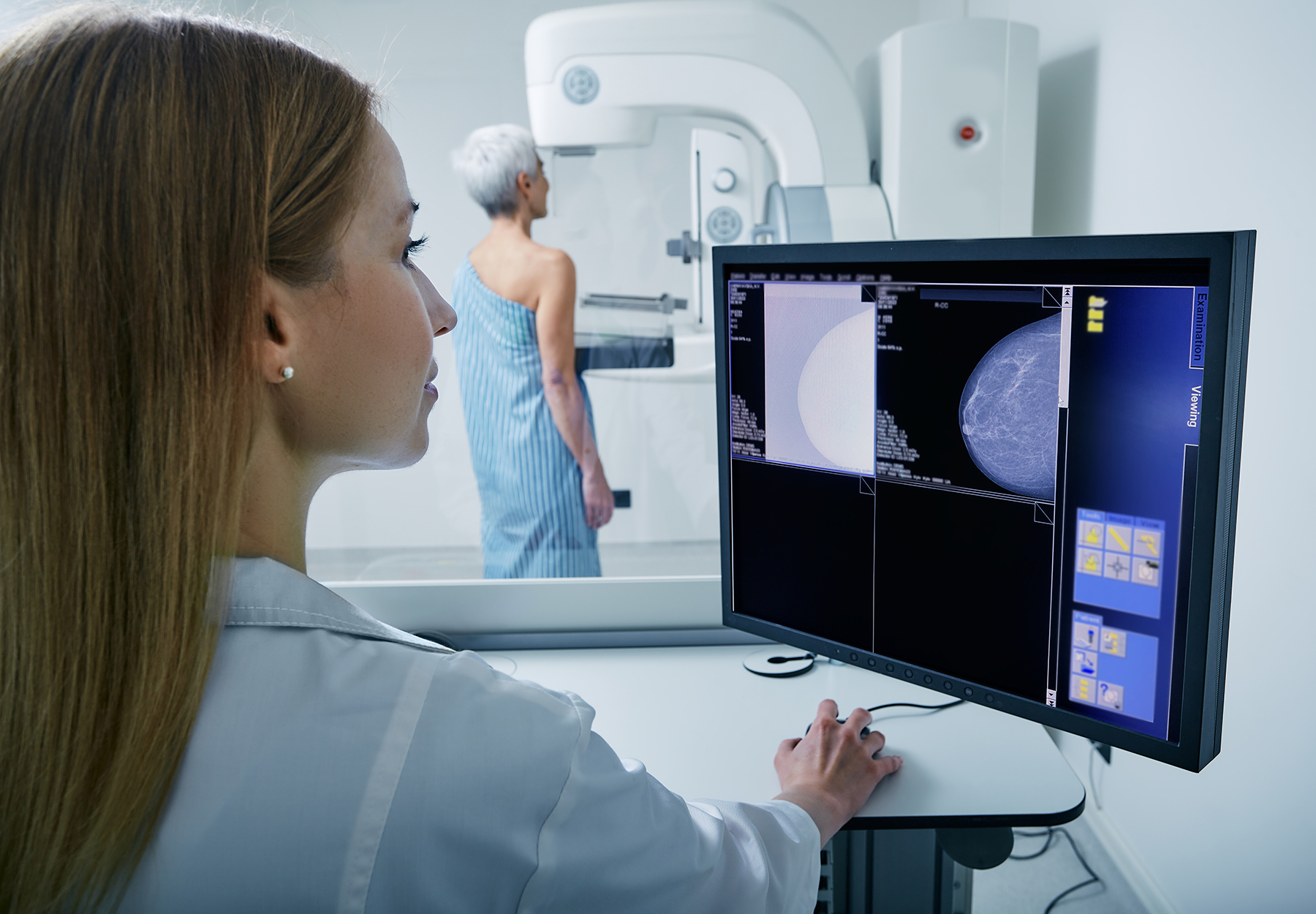AI Combined with DM and ABUS Can Improve Breast Cancer Detection
Researchers found that combining AI with both imaging technologies can improve the detection of cancer in women with dense breasts.

Use of deep learning / artificial intelligence (AI) systems can improve the effectiveness of automated breast ultrasound (ABUS) and digital mammography (DM) in detecting breast cancer. In one recent example of how AI can be used to improve cancer detection, published in the journal Insights into Imaging on January 16, 2023, a team of Chinese researchers showed that combining AI with ABUS and DM was shown to be better than each technology by itself in detecting cancer when tested in a group of women with dense breasts.1
The Diagnostic Challenge
Breast cancer is the most commonly diagnosed cancer among women globally. Early detection significantly reduces breast cancer mortality. As a result, many countries, including the US, have implemented population-based early detection screening programs encouraging women above a certain age and women with certain risk factors to periodically undergo breast imaging exams.
However, a major limitation with using imaging for early detection is that many women (approximately 50 percent of US women in their 40s and 50s) have dense breast tissue.2 DM uses 2D imaging techniques and is the main type of preventive breast cancer screening, but it is less effective in detecting cancer in dense breast tissue, resulting in “interval cancers.” These cancers are discovered within 12 months after a normal screening mammogram, and account for roughly 13 percent of all breast cancers diagnosed in the US.3 Because these cancers typically have more aggressive tumor biology, interval cancers are often at an advanced stage by the time they are discovered.
The Rise of New Breast Cancer Detection Modalities
For these reasons, researchers have been exploring the potential use of additional modalities to improve breast cancer detection. Such modalities include supplemental use of ultrasound imaging during screening. The Insights into Imaging paper explains that while combining ultrasound with DM has already been shown to yield additional cancer detection of 4.2 cases for every 1,000 women screened compared with mammography alone (11.8 cases vs 7.6 cases per 1,000 screened), using ABUS has even greater value for screening because it allows for standardized image acquisition by technologists.4 A 2015 Japanese study published in The Lancet also found that ABUS improves sensitivity by about 14 percent, resulting in more effective detection of early cancers.5
Another problem with DM is that it is labor-intensive. This has led to the development of computer-aided detection (CAD) systems that use deep-learning-based AI algorithms to improve the quality and cost-effectiveness of DM screening. Some CAD systems perform breast imaging at the level of experienced radiologists, according to a 2019 study published in the American Journal of Roentgenology.6 Use of multiple AI systems in combination with either DM or ABUS also improves the effectiveness of both of those modalities. But the effectiveness of combining AI systems for different modalities had been hitherto unexplored.
The Study
With this in mind, researchers from the Affiliated Hangzhou First People’s Hospital in China and their colleagues evaluated “the potential of combining the automated detections of two commercially available AI systems.” The two AI systems are currently approved by the U.S. Food and Drug Administration (FDA), one for DM and one for ABUS, and their performance in breast cancer detection was compared with radiologists’ assessment of breast cancer in women with predominantly dense breasts.
Using data from studies collected from women undergoing both bilateral DM and ABUS in a single institution in China between 2016 and 2018, the team compared 430 paired cases of DM and ABUS interpretations of four radiologists to that of the two FDA-approved AI systems. There were 42 malignant, 114 benign, and 274 normal cases. The researchers classified breast density as heterogeneously or extremely dense in 73 percent of patients. The team confirmed all malignant and benign cases via biopsy and normal cases by at least one year of negative follow-up with DM and ABUS.
After analyzing the detection results of AI and DM alone and AI and ABUS alone, the researchers found that combining AI with DM and ABUS produced the most accurate results, with a sensitivity of 79.4 percent and specificity of 91.2 percent. Moreover, the multi-modal AI performed as well or better than the radiologists at the same specificity operating points.
Takeaway: Multi-Modal AI Results Enhance DM and ABUS Breast Cancer Detection
Incorporating AI results from ABUS and DM boosts the diagnostic performance of a single-modality AI and can best the performance of single readers on mammography, all without having to get a radiologist involved, the authors concluded. This multi-modal AI approach could prove particularly useful in regions where there are few experienced radiologists capable of interpreting DM screening exams.
However, further investigation is needed before AI systems could be used as a standalone reader without a radiologist. In the meantime, radiologists may use AI as an aid to breast cancer diagnosis.
References:
- https://insightsimaging.springeropen.com/articles/10.1186/s13244-022-01352-y
- https://www.cancer.gov/types/breast/breast-changes/dense-breasts
- https://pubs.rsna.org/doi/10.1148/radiol.2021203758
- https://jamanetwork.com/journals/jama/fullarticle/181896
- https://www.thelancet.com/journals/lancet/article/PIIS0140-6736(15)00774-6/fulltext
- https://www.ajronline.org/doi/10.2214/AJR.18.20392
Subscribe to Clinical Diagnostics Insider to view
Start a Free Trial for immediate access to this article